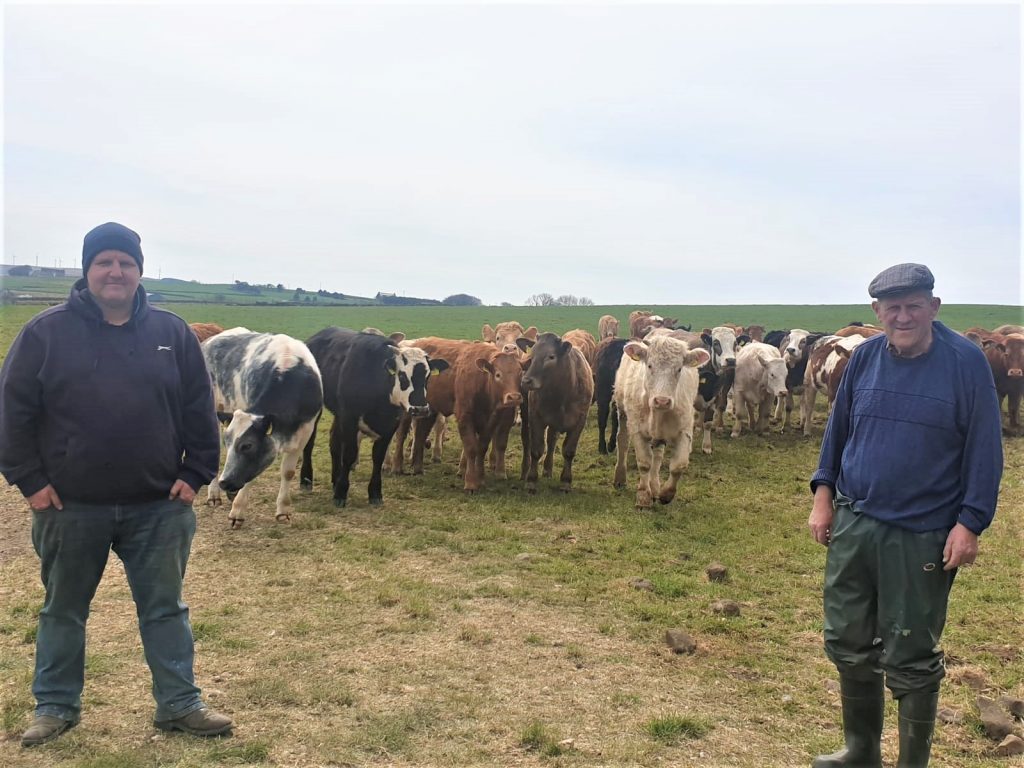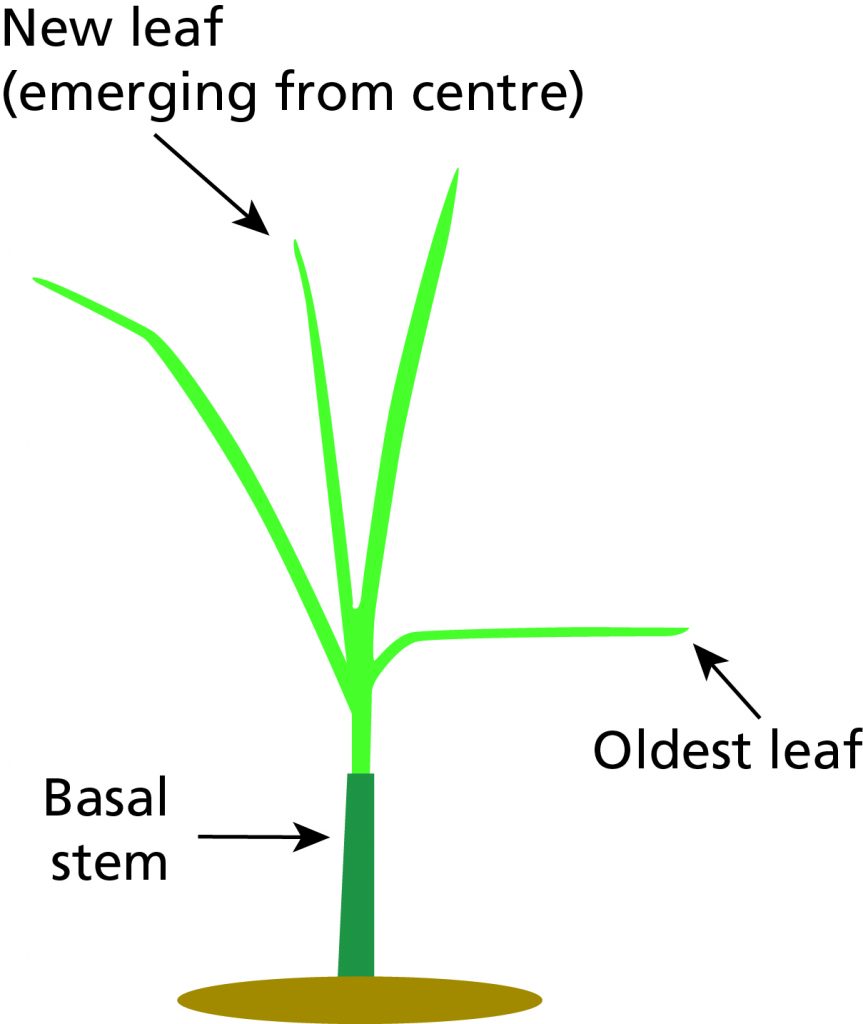Rotational grazing for Beef Cattle – I’ll give it a go!
April 23, 2020
Stephen Flanagan, CAFRE Beef & Sheep Development Adviser, Mallusk
Kevin MacAuley along with his son-in-law Derek, farm in partnership outside Broughshane, and have developed a beef finishing system that works for them. Good grassland management is the backbone of their sustainable system. They have been operating a set stocked grazing system but now feel that they could get more from grazed grass. They have opted to use rotational grazing to increase the kg of beef produced from the farm in the cheapest way possible, by growing and utilising more grass, increasing stocking rate, making high quality silage from the excess grown on paddocks and decreasing fertiliser usage.
Other farmers in their local CAFRE Business Development Group have successfully adopted the system, so they felt, “why not give it a go!!”
The majority of the 320 purchased heifers have been turned out to grass and Derek is planning to fine tune the rotational grazing system using sub divisions to obtain compensatory growth rates of between 0.8-1.0 kg of daily liveweight gain from the heifers.

So is rotational grazing worth the hassle? Stocking rates can be increased by 15-20% on average and in some situations the amount of grass grown increased by 50-70%.
Growing all this grass is fine, but if it cannot be consistently grazed at the correct growth stage or correct stage of maturity, all the efforts are wasted because you won’t get the required performance from the stock.
The principle of rotational grazing is ‘graze and rest’. Ideally the sward should be grazed for 3-4 days then rested for around 18-20 days before being grazed again. This should ensure that the grass is at the correct growth stage and stage of maturity. But it varies throughout the year and depends on growing conditions.
Let’s look at the science behind the humble grass plant. It uses energy from the sun to combine carbon dioxide and water to produce simple sugars which form leaves and stems using nutrients like phosphate (P) and potash (K) from the soil.
It takes around 21 days at this time of year for three new leaves to be produced as highlighted in figure 1. The oldest leaves will start to die off after 21 days so ideally a grass plant should be grazed every 21 days.

So if the sward is not grazed at the 3 leaf stage and dead material builds up at the base of the sward it results in stemmy herbage of lower digestibility. These grass plants will have higher fibre and lignin content plus lower crude protein and energy levels thus reducing cattle performance.
At present grass growth is increasing and it is not too late to start a rotational system like Kevin and Derek’s. Flexibility is key and if you are considering setting up a rotational grazing system on your farm here are some points that you should consider:
- Start small for the first year and try it out on one field or with one batch of stock until you are confident enough to change the whole grazing area over to paddocks.
- 7-8 paddocks are enough to manage in the first year or two.
- Paddocks should be square if possible. Long narrow paddocks unsettle stock particularly in wet weather when they are unsettled and will paddle and trample a lot.
- Ideally paddocks should be 1-2 acres in size providing 3-4 days grazing for the batch of stock. Paddock size however is often dictated by hedges and ditches and batch size. The paddocks can be sub divided when grass growth outstrips demand and the excess can be baled for silage.
- Water – Lightweight plastic drinking troughs supplied by water pipe placed on top of the ground is used successfully and can be moved from paddock to paddock with the stock. An alternative is to use an IBC on wheels that can be filled and moved from paddock to paddock.
- Use plastic electric fencing posts and wire with a battery or solar powered fencer unit initially until you have decided on the long term use of the system but a mains powered system is a good investment.
- Days 1 and 2 are ‘luxury’ grazing days with days 3 and 4 ‘tight’ days. Cattle may struggle to graze down to the ideal 4-5 cm height if the sward has become stemmy but don’t jeopardise performance by holding them in the paddock. Use the topper or allow dry cows or ewes to graze off the remainder.
- Demand is 2.5% of body weight. For example 400kg cattle, 10 kg DM/day. In at 3000kg DM/ha, out at 1600 kg DM/ha = 1400 kg DM/ha supply or 565kg DM/acre. So 565/3 days grazing/10kg DM demand per 400 kg animal = 18 store cattle at 400 kg per acre, go with 15 cattle to start with to allow flexibility
- Remember the three 3’s, graze at the 3 leaf stage, graze for 3 days, rest for 3 weeks!
